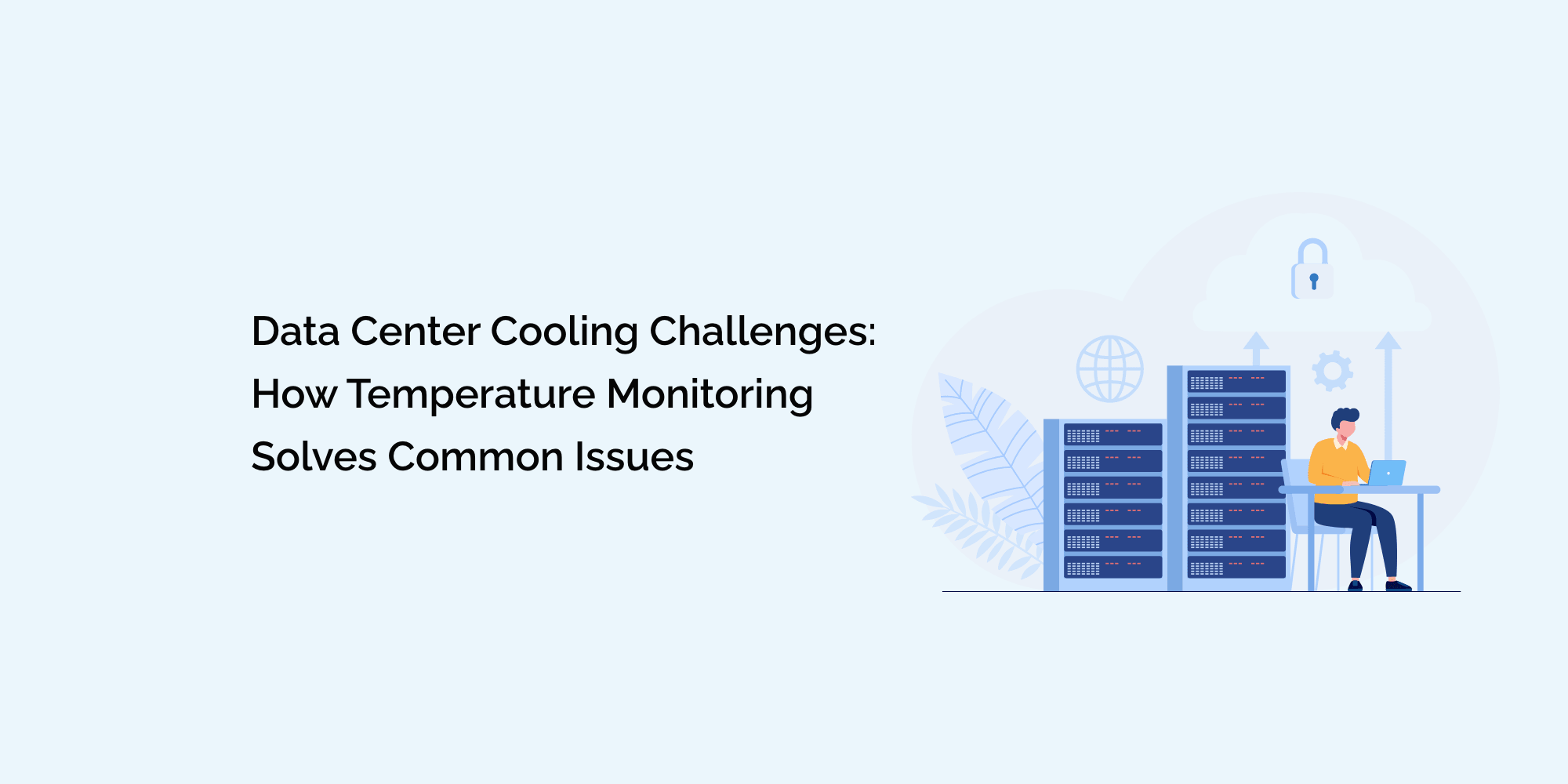Data centers play a critical role in the digital age, serving as the backbone for various industries and supporting a myriad of applications and services. As the demand for data processing and storage continues to grow, data centers face significant challenges in maintaining optimal cooling conditions. Cooling is essential to prevent hardware overheating, ensure reliable performance, and prevent downtime. To address cooling challenges effectively, data center administrators rely on temperature monitoring solutions. In this comprehensive blog, we will delve into the cooling challenges faced by data centers, explore the importance of temperature monitoring, and highlight how it resolves common cooling issues.
The Importance of Cooling in Data Centers:
Cooling is crucial in data centers for several reasons:
-
Hardware Reliability: High-performance hardware components require stable temperatures to operate optimally. Cooling ensures these components remain within recommended temperature ranges, enhancing their reliability and longevity.
-
Preventing Downtime: Overheating can lead to critical hardware failures and unexpected downtime, impacting data center operations and services.
-
Energy Efficiency: Efficient cooling management based on real-time temperature data allows data centers to optimize cooling systems for energy efficiency, reducing operational costs and environmental impact.
-
Heat Dissipation: Cooling mechanisms help dissipate the heat generated by high-density computing systems, preventing thermal stress on hardware components.
- Uniform Cooling: Data centers must maintain uniform cooling throughout the facility to prevent hotspots and ensure consistent hardware performance.
Common Cooling Challenges in Data Centers:
Data centers encounter various cooling challenges, including:
-
Hotspots: Hotspots occur when certain areas of the data center experience higher temperatures than the rest, potentially leading to equipment malfunction and reduced hardware lifespan.
-
Inefficient Cooling: Improperly configured or outdated cooling systems may lead to inefficiencies, resulting in increased energy consumption and cooling costs.
-
Cooling Capacity: As data centers expand and accommodate more hardware, cooling systems must be scalable to handle increased cooling demands.
-
Airflow Management: Inadequate airflow management can create temperature variations and affect hardware performance.
- Equipment Failures: Overheating can cause hardware components to fail, resulting in downtime and the potential loss of valuable data.
The Role of Temperature Monitoring in Resolving Cooling Challenges:
Temperature monitoring plays a pivotal role in resolving cooling challenges by providing real-time temperature data and facilitating proactive cooling management.
-
Real-Time Monitoring: Temperature sensors offer real-time monitoring of temperature variations, allowing administrators to detect and address cooling issues promptly.
-
Hotspot Detection: Temperature monitoring identifies hotspots, enabling administrators to implement targeted cooling solutions and prevent potential equipment failures.
-
Early Issue Detection: Proactive temperature monitoring helps identify cooling inefficiencies and potential hardware failures before they cause major disruptions.
-
Energy Optimization: Temperature data aids in optimizing cooling systems, ensuring they function at peak efficiency to support high-performance hardware while minimizing energy consumption.
- Predictive Maintenance: Analyzing historical temperature data facilitates predictive maintenance, allowing administrators to schedule preventive actions before potential issues arise.
Solving Cooling Challenges with Temperature Monitoring:
Temperature monitoring solutions resolve cooling challenges through the following strategies:
-
Hotspot Mitigation: By identifying hotspots, administrators can implement targeted cooling solutions such as localized cooling units or reconfiguring airflow to alleviate hotspots.
-
Efficient Cooling: Real-time temperature data enables administrators to optimize cooling system configurations for maximum efficiency, reducing energy consumption and cooling costs.
-
Scalability and Capacity Planning: Temperature monitoring helps data centers plan for future expansion by monitoring cooling capacity and ensuring scalability to meet increased cooling demands.
- Preventive Maintenance: Proactive temperature monitoring allows administrators to detect potential hardware failures and schedule preventive maintenance to mitigate downtime risks.
Choosing the Right Temperature Monitoring Solution:
To effectively resolve cooling challenges, data centers must choose the right temperature monitoring solution with the following key features:
-
High-Quality Temperature Sensors: Accurate and reliable temperature sensors provide precise and timely temperature data.
-
Real-Time Monitoring: Real-time access to temperature data ensures immediate responses to cooling issues.
-
Remote Access and Alerts: Remote monitoring and customizable alerts enable administrators to respond promptly to temperature fluctuations and critical cooling events.
-
Historical Data Analysis: Analyzing historical temperature data helps identify trends and patterns, enabling proactive cooling management and predictive maintenance.
-
Integration with Cooling Systems: Integration with cooling systems allows data centers to implement automated cooling adjustments based on temperature data.
- Scalability and Flexibility: The temperature monitoring solution should be scalable and flexible to accommodate data center expansion and changing cooling needs.
Conclusion:
Data center cooling challenges are increasingly prevalent as data centers strive to meet growing computational demands. Proper cooling management is vital to maintain hardware reliability, prevent downtime, and ensure energy efficiency. Temperature monitoring solutions play a pivotal role in addressing these challenges by providing real-time temperature data, proactive issue detection, and predictive maintenance capabilities.
By implementing a comprehensive temperature monitoring strategy, data centers can mitigate cooling challenges, optimize cooling efficiency, and ensure the reliable and efficient performance of critical hardware components. Investing in the right temperature monitoring solution allows data centers to stay ahead of cooling issues, reduce operational costs, and meet the demands of the digital age.








